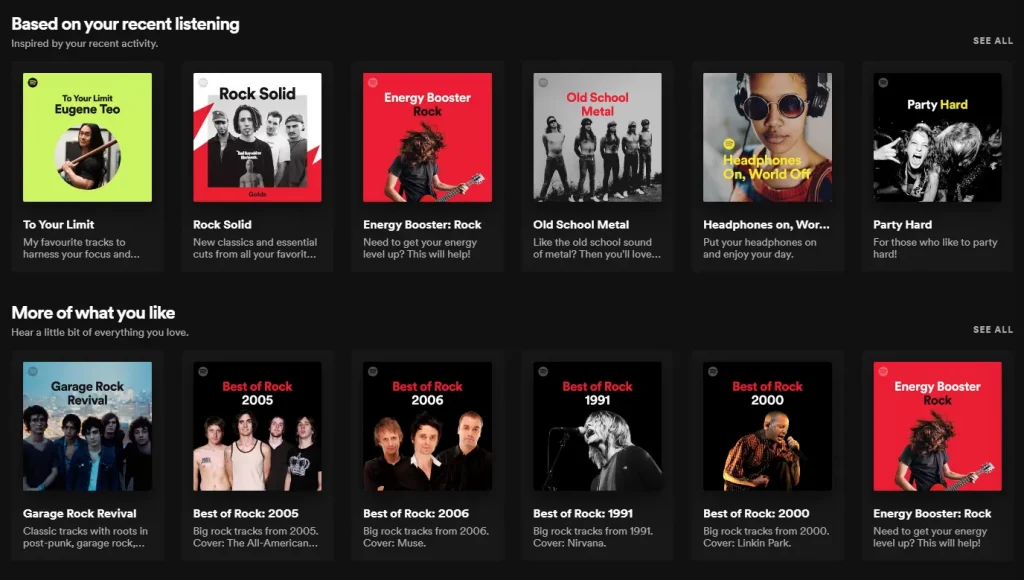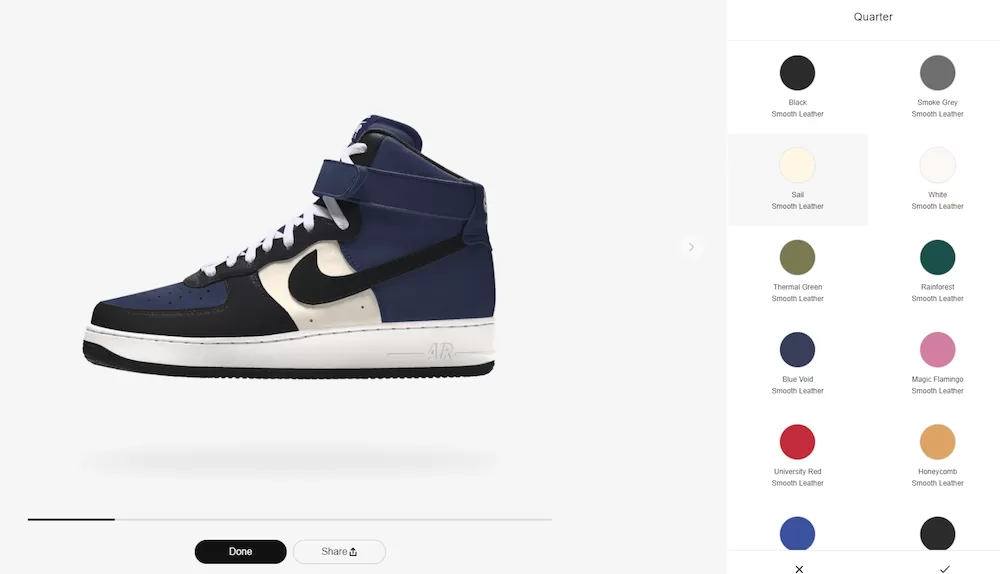The distinction between hyper-personalisation and customisation depends on who is inputting the data or making the changes. Hyper-personalisation is the action of creating or modifying an item using customer data to meet an individual’s needs. Customisation is when the customer manually makes changes to the item to meet their needs or requirements.
Although seemingly similar at the surface level, one particularly important difference to note here is that of implicit and explicit focus. Implicit means implied, so a company can modify the item without the customer expressing they want a change made. Explicit means something that is stated directly by the customer, such as a change to their item.
Hyper-personalisation is implicit: takes place without actively asking users for their preferences. In other words, the company (or more likely their data and algorithm) controls and modifies the experience on the user’s behalf.
Customisation is explicit: controlled by the users and therefore explicit. Users are actively asked to make choices to tailor the experience to their preferences.
Although both approach the consumer from different angles, you can combine them into your customer engagement strategy to create a satisfied customer.
Personalisation vs customisation in action
Digital technology has helped to stretch the limits of what personalisation can do. Despite issues around the transparency of data used, 83 % of consumers are willing to share their data to create a more personalised experience.
And, with more agile tech and sophisticated manufacturing techniques, customisation has become far more accessible too.
Here’s how businesses implement personalisation:
- Marketing emails: simply replacing products you “hope” to sell with items identified as the greatest probability of being purchased, which goes a long way to establishing and improving customer relationships.
- Recommendations: content personalisation where the website visited is tailored to the individual visitor offering products which suit a user’s interests based on their settings, preferences, or history.
- Customer service: hyper-personalisation in customisation is extremely important as it shows the end-user that you know who they are, are aware of their problems, and are here to help them…personally. You may find why personalisation matters so much useful.
Here’s how businesses offer customisation:
- Software: most SaaS companies provide their customers with the ability to choose their plans or alter an existing one to meet their needs affecting the price or usage of the application.
- Products: customers modify the shape, colour, layout, or design of a product to make it feel like theirs and create something nobody else has.
Advertising: users may also be explicitly asked what sort of advertising they want to be exposed to. Facebook and Google, both offer the user options to determine the type of advertising content they’re served.
Examples of hyper-personalisation vs customisation
You don’t have to search far to find companies trying their hand at customisation or personalisation. But to find them doing it well, you need to dig a little deeper.
Here are a few examples of businesses that have boosted customer experience by nailing their personalisation and customisation tactics.
Example of personalisation: Spotify
Spotify has a formidable reputation for its personalisation game. Their hyper-personalised curated song lists have been a big hit with their users. The users’ home page contains sections based on their recent listening or more content you’d like.

This makes Spotify feel like the customers’ personal music streaming service, even though it’s been downloaded by millions of others. This personalised feature not only improves the user experience, but it opens up the discovery of new content that is relevant to them.
Example of customisation: Nike ID
Nike is a long-established heavy hitter in the world of retailers and has also made big waves with their flagship experience store. They took mass customisation to the next level with NikeID, offering consumers the chance to customize products and make them unique.

Although the price goes up significantly compared to the standard versions of the sneakers, the customers get a chance to create a pair exactly how they want. This feature is highly used and a staple within the Nike brand by simply allowing customers to change what they want about an existing product.
Personalise or customise for the customer
The last thing that modern customers want is to feel like a pound sign. So whatever type of business you’re in, providing hyper-personalisation or customisation enhances the customer experience. Only when you take a close look at the stats do you appreciate the power of personalisation over customisation. Both McKinsey and Statista confirm that personalisation outperforms, not only customisation but this and omnichannel marketing and tradition ESP campaigns by as much as twenty times the return. This makes it the most important aspect of digital marketing in the world today.
Not only will your customers see that you do care, but you’ll reap the benefits in revenue (AOV) and loyalty (LCV) as well.





